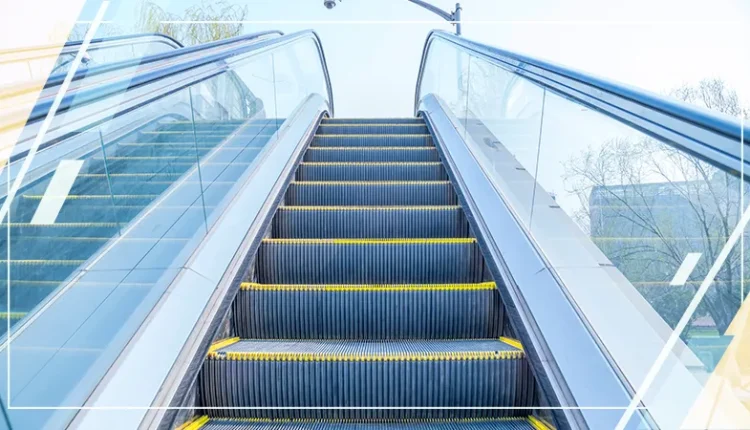Have you ever stopped to consider how often you rely on elevator and escalator in your daily life? Annually, the combined distance traveled on escalators and elevators equals 75% of the total mileage covered on highways in the United States. From soaring skyscrapers to sprawling underground metro stations, these marvels of engineering quietly facilitate our vertical and horizontal movements, shaping the way we navigate modern urban landscapes. Elevators whisk us effortlessly to dizzying heights, while escalators glide us smoothly through bustling public spaces. Together, they represent not just practical solutions to transportation challenges but also symbols of human innovation and urban evolution.
The Rise of Elevators
Elevators, or lifts as they are known in some parts of the world, have a history intertwined with the ambition to conquer heights. Their evolution from rudimentary platforms hoisted by ropes to sophisticated, high-speed cabins capable of traversing hundreds of meters in seconds is a testament to human ingenuity.
The earliest documented elevator-like devices date back to ancient civilizations like those of Greece and Rome, where powered platforms were used to transport goods and people. However, it was during the Industrial Revolution in the 19th century that elevators truly began to ascend, quite literally. Innovations in steel manufacturing, hydraulic systems, and later electric motors allowed for safer and more efficient vertical transportation.
Skyscrapers, once constrained by the limits of staircases, soared to new heights thanks to elevators. The Eiffel Tower, completed in 1889, boasted lifts that ferried visitors to its dizzying summit, offering a panoramic view of Paris. This integration of elevators into iconic structures marked a turning point, fueling the ambition to build higher and higher.
The Advent of Escalators
While elevators conquered the vertical dimension, escalators revolutionized the horizontal. Introduced at the turn of the 20th century, escalators provided a dynamic solution to moving large volumes of people smoothly through public spaces such as department stores, train stations, and airports.
The principle of the escalator is elegantly simple yet effective: a continuous loop of steps that ascend or descend at a gradual incline, driven by a system of gears and chains hidden beneath. This seamless motion made them not just a practical necessity but also a symbol of progress and modernity.
What is the Difference Between Elevator and Escalator?
Elevators and escalators are both essential modes of vertical transportation, yet they serve distinct purposes and operate on different principles. Elevators are primarily designed to transport people or goods vertically between different floors of buildings. They consist of a cab or platform that moves along a fixed track or shaft, propelled by mechanisms such as cables, hydraulic pistons, or modern electromagnetic systems. Elevators are essential in high-rise buildings, providing efficient and rapid access to upper floors without the physical exertion required by stairs.
On the other hand, escalators are inclined moving walkways consisting of a continuous loop of steps or plates that move in a specific direction, either upwards or downwards. Unlike elevators, which transport passengers in a closed cab or platform, escalators allow continuous movement while passengers stand or walk along with the direction of travel. Escalators are commonly found in busy public spaces such as airports, train stations, shopping malls, and metro stations, where they facilitate the smooth flow of people over short to moderate distances.
Engineering Feats and Modern Innovations
Today, elevators and escalators are marvels of precision engineering and design. High-speed elevators in skyscrapers like the Burj Khalifa in Dubai can ascend at speeds exceeding 10 meters per second, offering breathtaking views and efficiency. Escalators have evolved to accommodate longer spans, higher capacities, and even intricate safety features that ensure smooth operation in crowded spaces.
Moreover, advancements in technology are transforming these staples of urban life. Smart elevators equipped with artificial intelligence can predict traffic patterns and adjust operations to minimize wait times. Escalators are becoming more energy-efficient through regenerative braking systems that capture and reuse energy generated during descent.
Government Standards for Elevator and Escalator
Government safety standards for escalators and elevators ensure the safe design, construction, installation, operation, inspection, testing, maintenance, alteration, and repair of these essential vertical transportation systems. Key regulations are established by various bodies:
● Occupational Safety and Health Administration (OSHA)
OSHA enforces workplace safety regulations, including those for elevators and escalators. Employers must adhere to OSHA standards, conducting regular inspections, maintenance, and implementing safety protocols to protect workers.
● American Society of Mechanical Engineers (ASME)
ASME sets comprehensive codes and standards for elevators and escalators through the A17 Elevator and Escalator Committee. These standards cover safety in design, construction, installation, operation, and maintenance, ensuring compliance with national and bi-national regulations.
● U.S. Access Board
Elevators, including limited use/limited application (LULA) and private residence elevators, must meet the ASME A17.1 Safety Code for Elevators and Escalators. This aligns with ADA Standards, which specify compliance with the A17.1-2000 edition and subsequent addenda until further updates are adopted.
● Standards Council of Canada
The SCC provides safety codes ensuring escalators and elevators meet specific safety and performance requirements, part of a transparent notification system for new standards.
● Ontario Regulation 222/01
In Ontario, Canada, this regulation outlines certification and training requirements for elevating device mechanics, incident reporting procedures, and safety guidelines for escalator owners and operators.
Summing it Up
Elevators and escalators are more than just machines; they are dynamic symbols of human ambition and progress. From humble beginnings to towering achievements, their evolution continues to shape our cities and redefine our understanding of mobility. As we look to the future, the challenge lies in harnessing their potential for sustainable urban development while continuing to elevate our aspirations.
In the ever-changing urban landscape, where every floor represents a new possibility and every step signifies progress, escalators and elevators stand as steadfast companions, connecting us all in the journey of modern life.


